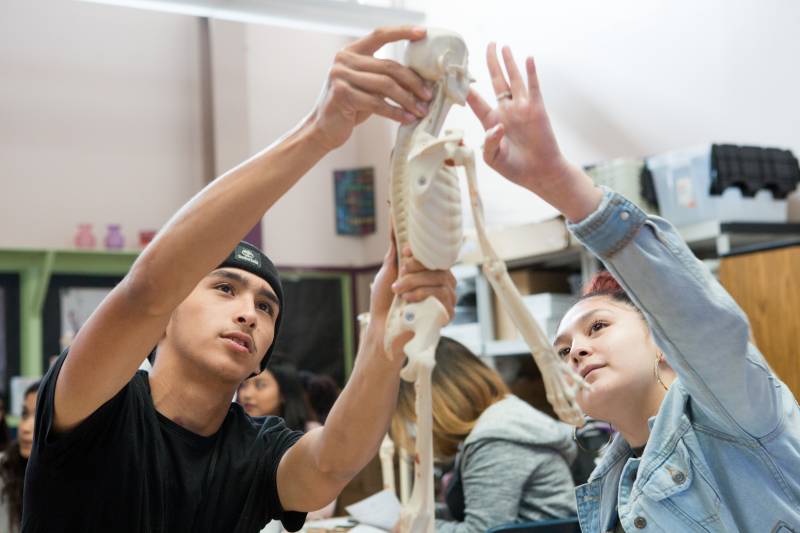Can you imagine a class where students have uninterrupted time to play, dream and create with their peers? Giving students the room to be curious and imaginative is fundamental to building what former math and science teacher Christopher Emdin calls a dream culture. “If you give young people the space and time to play and dream, something is activated within them that supports them in every facet of their lives,” said Emdin, who is an education professor at the University of Southern California. He’s a firm believer that a dream culture is key to deepening students’ engagement and sense of belonging in science, technology, engineering and math (STEM) disciplines.
Students who are girls, Black and Latinx are likely to experience doubts about their STEM abilities due to the lack of diversity in these fields. According to Pew Research Center, Black and Latinx people are underrepresented in STEM jobs. And while women make up half of the STEM workforce, they remain underrepresented in various professions, including computer and engineering jobs. Emdin’s book “STEM, STEAM, Make, Dream” outlines how teachers can make STEM education more inclusive, support students in reimagining their relationship to STEM subjects and help their learners become better dreamers.
Show that STEM is subjective
STEM, a concept popularized in the early 2000s, merges together four powerful areas of study, and schools have increasingly sought to prepare students to pursue careers in these fields. Teachers may see objectivity and cold hard facts as the best way to promote rigor in STEM learning, but Emdin thinks this perspective is limiting because it does not acknowledge that life experiences and perspectives shape scientific inquiry. “To be objective is to be at a place of detachment from the human experience,” writes Emdin in his book. “It’s being at a place where one is not connected to how people feel or experience this world.”
Recognizing subjectivity in STEM can make it more culturally relevant to students. Teachers who want to embrace STEM’s subjectivity can acknowledge that many cultures have STEM traditions that may not be included in textbooks. Additionally, women’s contributions to STEM have been largely erased. Emdin told MindShift that centering diverse people’s scientific and mathematical discoveries reveals how bias has long been a part of the discipline and invites students to connect to a more robust picture of STEM.

